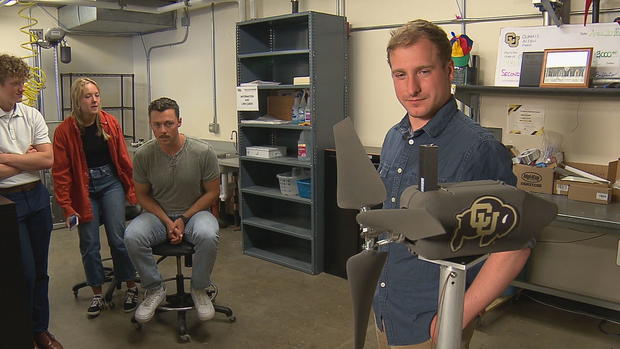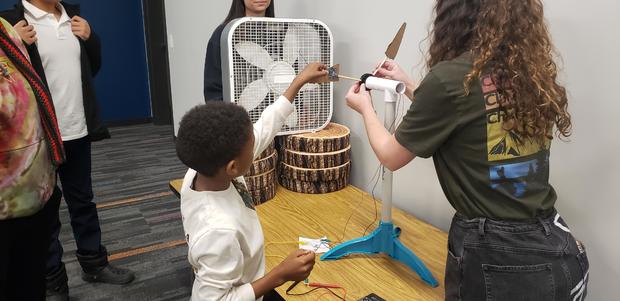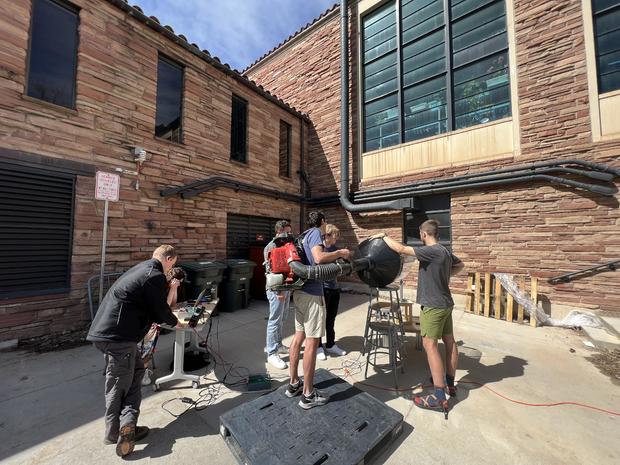University of Colorado engineering team takes big win in national wind competition
The 10th annual Collegiate Wind Competition was held in Boulder May 17-19. In the final event of the competition, 13 teams tested their prototype wind turbines and presented their work to panels of wind energy experts. The competition is designed to spark interest in wind energy careers through real-world technology, project development and outreach experience.
"By participating in the Collegiate Wind Competition, these students gained hands-on experience and built professional relationships that will help them join the nation's wind energy workforce," Acting Assistant Secretary of Energy Efficiency and Renewable Energy Alejandro Moreno said in a news release. "Wind energy is already one of the fastest growing industries in the country but we need many more workers for us to achieve our goals of a 100% clean electricity by 2035 and a net-zero-emissions economy by 2050. I congratulate the 2023 winning teams, and I look forward to seeing what these students do next in this space."
There are three aspects to the competition. Each team had to build a prototype of a fixed-bottom offshore wind turbine, create plans for an offshore wind energy farm, and raise wind energy awareness in their communities.
"This is Turby Windsor," Ethan Smith said as he introduced the prototype wind turbine built by the Senior Design Team at the University of Colorado's Mechanical Engineering Department.
Smith was the Electrical Design Lead on the 13-member team who built Turby Windsor. The was for the prototype to generate as much wind as possible.
"That's why we have these big wide blades to capture as much wind as we can," Smith said as he explained the features of the turbine.
Built from scratch, the turbine has blades that pivot for optimal pitching, an anemometer to measure wind speed, a kill switch that stops the blades in an emergency and a suction bucket base for stability. The whole thing runs on some simple electronics also developed by the students.
While one team worked on engineering the prototype, other students were developing a hypothetical wind farm off the Gulf Coast. They had to do a full financial analysis, a fill wind/wake model analysis, chose the type of wind turbine appropriate for the project, look at the environmental impact analysis and a community impact analysis.
"To see who can come up with the most financially profitable wind farm, as well as sustainable," said Chris Holladay, a Wind Farm Engineer on the team.
They also had to take their wind energy knowledge out into the community.
"We were able to reach out to a bunch of Boulder Valley Schools, and basically, go in with a very simple wind turbine, and they actually had the opportunity to make wind turbine blades out of household materials, and so it was kind of a little competition for the kids who see who could produce the most power," Smith explained.
When competition time came around, it was Turby Windsor that was the real wild card. The students built her, but couldn't properly test her. They used a leaf blower to make sure she worked, but they didn't have the ability to put her through her full paces.
"One of our major challenges was not having a wind tunnel," said Ariana Carmody, Finance Manger for the team.
They had to calibrate and trouble shoot their project during the competition. Turby Windsor was judged on energy production, safety features and durability.
"We actually got up to 60 watts and it survived. It's still here," Smith told CBS News Colorado.
Not only did Turby Windsor survive, she and the team won second place overall in the competition. The team from Kansas State University won first place.
"Everyone was so dedicated to the project, and I've never worked on a project where everyone put their whole heart into everything, so it was really rewarding to come out with second place," Carmody said.
The CU team was made up of all seniors, who have all now graduated. But, they're leaving Turby Windsor behind to instruct next year's team.









